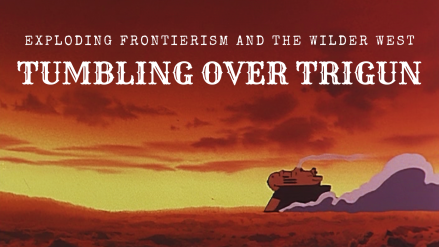“All of life’s journeys come with meetings, partings, and reunions.”
– Meryl Stryfe
Upon finishing Trigun (1998), Trigun: Badlands Rumble (2010), and Trigun Stampede (2023) for the first time this past February, I surprised myself when I hopped over to the keyboard and realized I had nothing to say. The words simply wouldn’t come. It’s not like I was blown away from witnessing a masterpiece. If anything, my experience felt mostly lukewarm, save for the tingle of relief that came from having cleared out another series in my watch stack.
So, rather than force myself (and any readers) through a more traditional review or reflection post, I figured I’d tug a bit on the unique setting elements that stood out to me either for their sheer creativity or potential historical allusions. Note that this is NOT a formal analysis, nor am I suggesting any authorial intent. Instead, I aim to connect Trigun with a separate history that precedes its creation, that which is bottled within my incredibly limited understanding of the U.S. Wild West, its motifs, and a few themes. Unfortunately for Stampede fans, this means I’ll mainly be sticking to the classic series. Mild spoiler warnings for the entire Trigun animated franchise!
Ready? Steady? Let’s roll!!
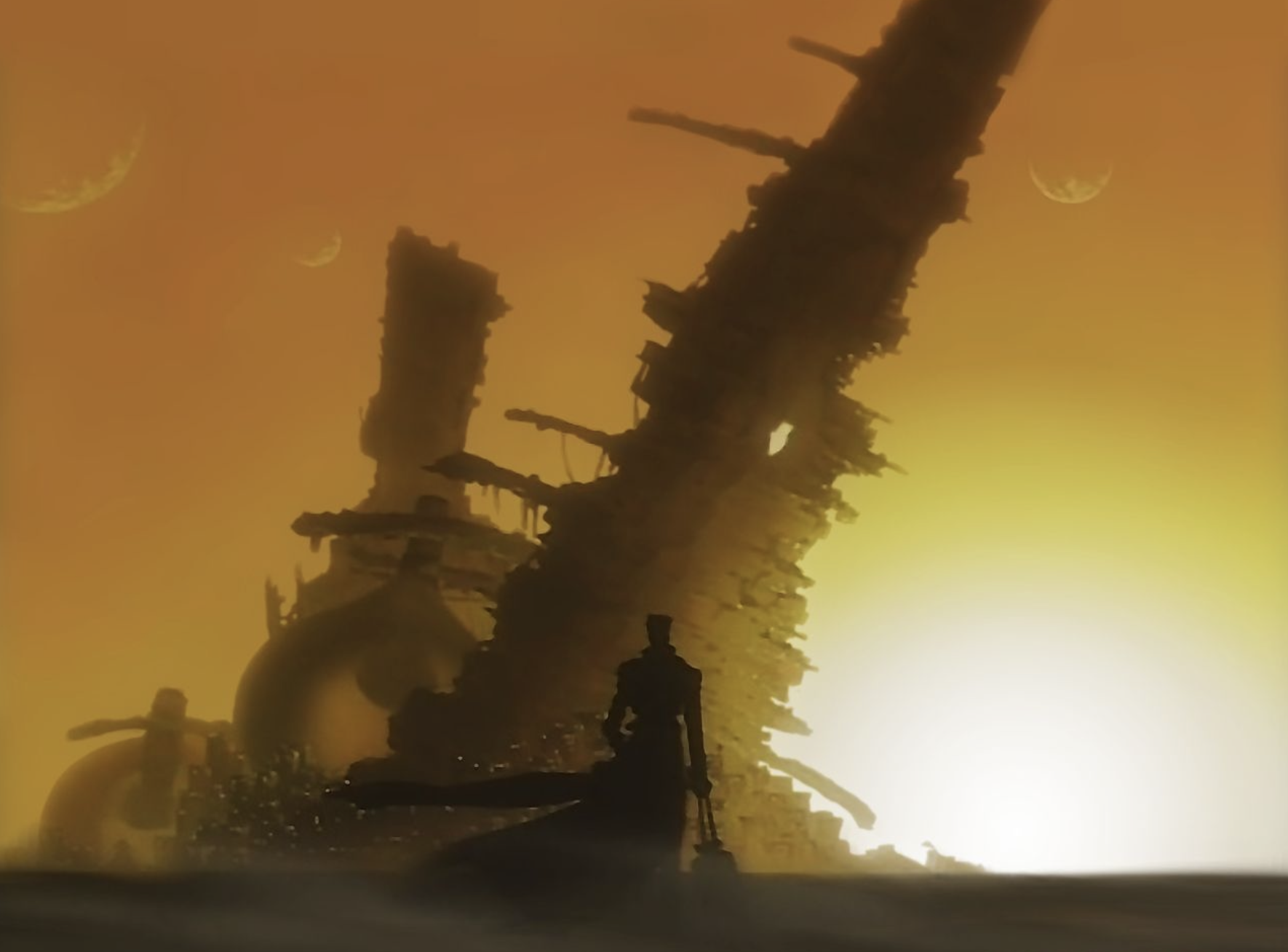
No-Man’s Land, an Ever-Expanding Frontier
When it comes to Trigun, the biggest draw for me isn’t its flashy characters or high-octane entertainment value. Rather, it’s the world that this sci-fi Western is set within. Some call the desert planet Vash and crew roam “Gunsmoke,” while others refer to it by the equally loving moniker “No-Man’s Land.” (There’s literally a Reddit thread dedicated to fans disputing the planet’s name, I’m not joking.)
However you stack the deck, this barren wasteland offers few sympathies towards the unwary. Although water is as precious as gold out in the dusty field, one can count on the occasional small-town saloon to have its shelves stocked with the goods. The liquor is cold, the women are tough, and everyone owns a gun. By the way, these towns or “Plants” apparently formed out of the husks of massive spaceships that crash-landed on the red planet long ago. This is the world of Trigun.
. . . And call me crazy, but doesn’t it kind of sound like America’s own Wild West?
Historians peg the start of this period being 1800 with Frederick Jackson Turner’s Frontier Thesis declaring the frontier “closed” in 1890. When we think of cowboy Westerns, our minds are pulling on Hollywood portrayals of the peak of this period, around 1865. Given the relatively large span of time, one can interpret the frontier as an idea, a metaphor of process that is not only physical but also political, even psychological. Famously, Turner coined America’s Frontier as “the outer edge of the wave—the meeting point between savagery and civilization.” As adventurers, armies, and settlers pushed toward the Pacific, exploration, struggle, confrontation, and compromise each came to describe this psychological and social expansion. Hence, the frontiersman proved his Americanness by taming this savage Western landscape. Sadly, it was humanity that became (and technically already was) a part of this landscape.
“We are searching for a place where we can live our lives in peaceful days. No wars, no stealing; a place that isn’t run by fear; a place where people can live, and actually trust other human beings.”
– Vash the Stampede
Whether cattle-driving cowboys and pioneers or refugees and migrant families from faraway lands, settlers of the frontier have traversed its rough terrain for centuries. Understandably, travel and setting play crucial roles in Western-inspired stories just like Trigun. More common than not is it to encounter characters in frontier stories moving from one plot to another in the search of a place to call home. (This is arguably the entire plot of Trigun Stampede . . .) Some ventures involve transcontinental travel or a plight from interplanetary worlds; other movements occur in intimate spaces as private as the bedroom or even the human mind. We see this mirrored in the way Vash strips down when he’s alone in his various busted motel rooms. The outlaw’s bright personality grows markedly dismal when he pensively reminisces on his travels, his fears, and his past. Across both anime adaptations, he manages to mask the truth of his identity beneath obnoxious smiles and booze, but it is traveling the frontier with Meryl and friends that slowly starts to wear down his bravado.

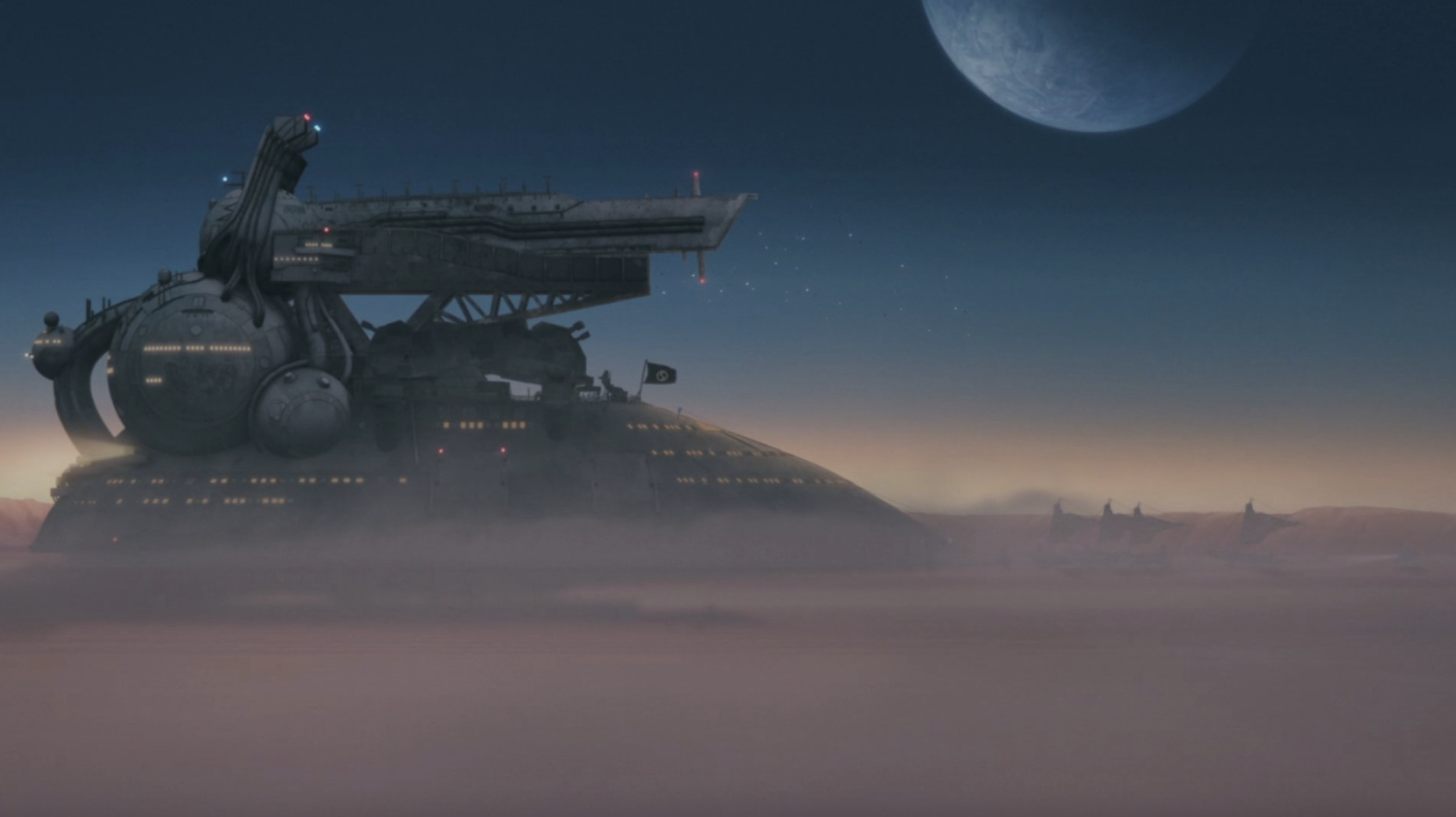
The Transcontinental Railroad Sandsteamer
As a child, I used to be a train-kid. Trains occupied such a huge part of my life, so much so that I thought I’d grow up to be a train conductor one day. Oh, if younger me were to find out that passenger cars would become obsolete by the time he became a teenager, he’d probably have lost his faith in humanity much sooner. Thankfully, traveling by train is the best way to cross Trigun‘s seamless deserts, and Stampede made sure not to abandon faith either—even if the redesigns look more like clothes irons than locomotives!
Wait a sec. Sandsteamer. Steam irons. Maybe Stampede is onto something after all.
By connecting the already existing eastern U.S. rail networks to the west coast, the Transcontinental Railroad became the first continuous railroad line across the country. It was constructed between 1863 and 1869, which according to our earlier history lesson matches right up with the height of the Wild West era. No wonder so many Westerns featured precarious showdowns on the roofs of zooming train cars. Trigun pays homage to this combat motif in two drastically different episodic plots depending on the series. The thrilling two-parter arc in the classic version gave us a particularly in-depth look at the sand steamer’s inner schematics, and I’m eternally thankful for it.
Wherever the journey goes, motion accompanies the landscape. Whether traveling by boot, cruising via sandsteamer, or hitching a ride on the back of Meryl’s bird/ostrich thing (or sports utility vehicle in the remake), the travel motif connects us to themes of personal growth, reflections of identity, and the cultivation of the agricultural frontier (for not everyone takes on the desert with pistol in hand).
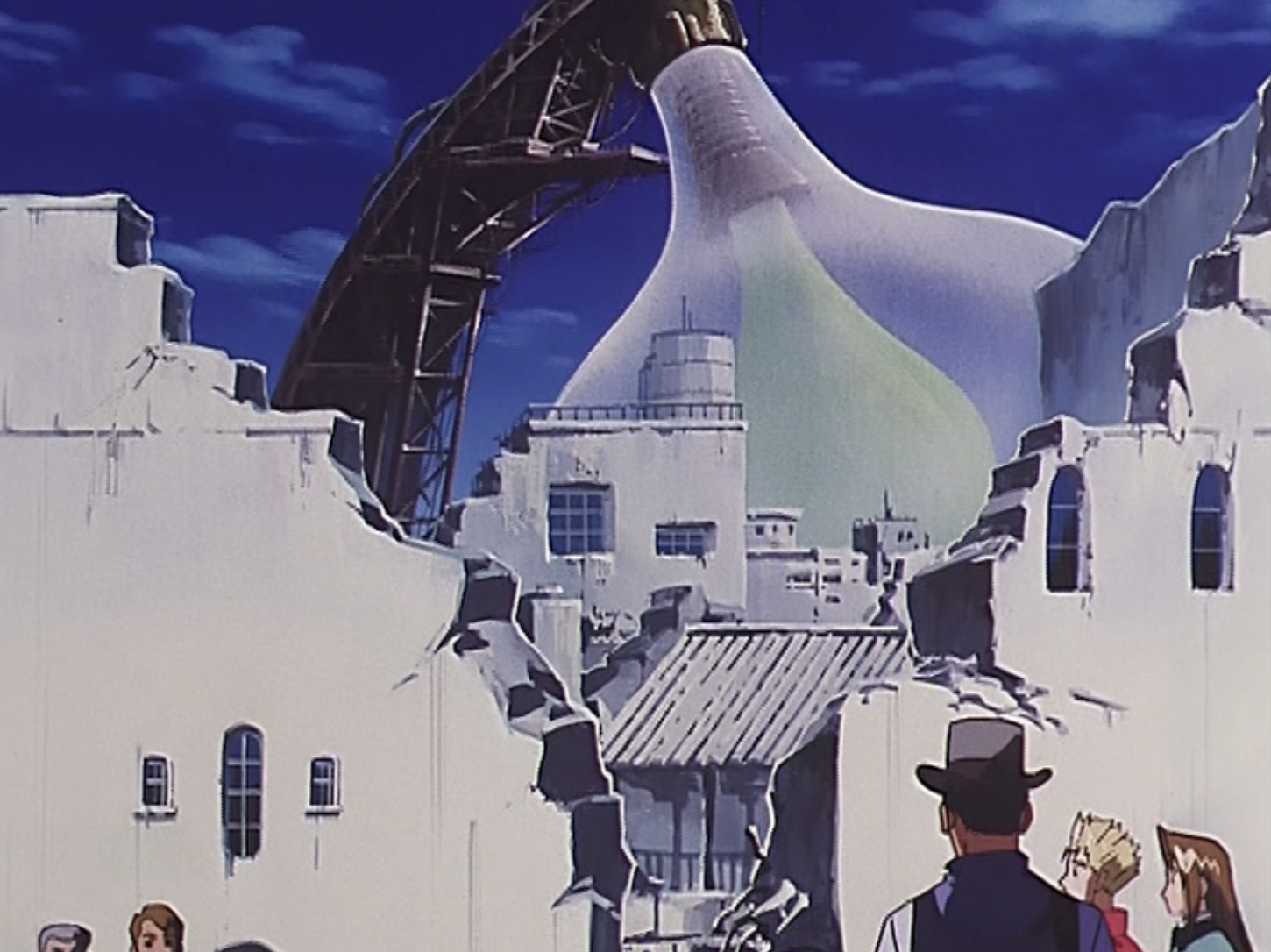
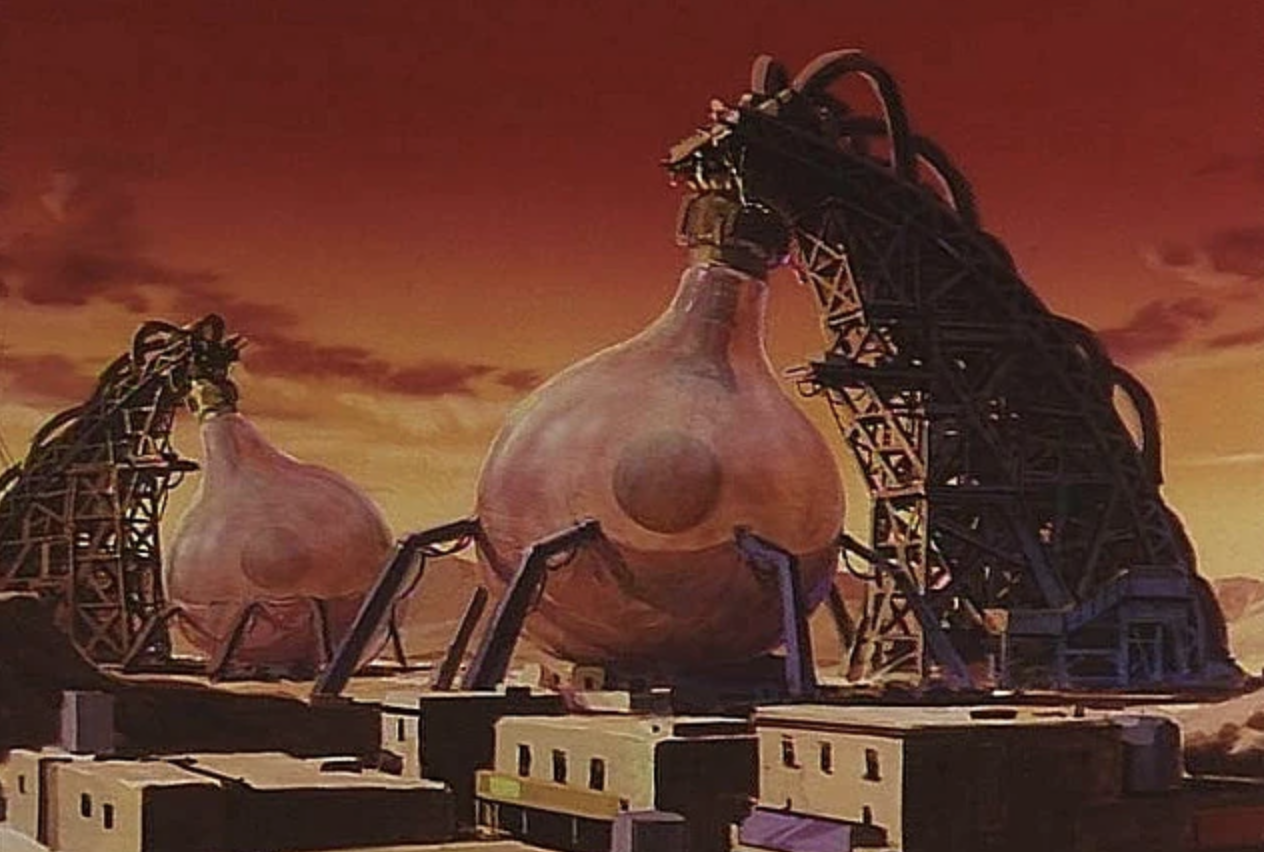

The Big Electrical Boom
Despite the analogies I’ve made to frontiers and railroads, Trigun isn’t technically a Western; it’s a science-fiction series, one that sometimes toys with elements of cyberpunk through its action-packed set pieces and leather-bound character designs. So, the third connection I make here might seem like I’m reaching (because I am, I always am), but hear me out!
Trigun‘s representations of electrical power “Plants” echo the advent of electricity and the West’s increasing dependence on it for survival.
In studying the fate of the Wild West, three major factors contributed to its end: barbed wire fencing, privatized land, and the railroad. Now, electricity wasn’t commercially available in the U.S. until the LATE 1800s, and western settlers wouldn’t get a taste of it until well into the 1900s, some places as late as the 1950s. (Shocking!) However, what seemed a pleasant commodity at the start eventually turned into a necessity in rural areas. During the Great Depression of the 1930s, communities banded together to bring electricity to America’s farmland. With electricity, farmers could produce greater quantities of food and other resources.
Taken together, I find it most intriguing how the Plants or spaceship remnants that form the heart of each dinky town scattered across No-Man’s Land (AKA Gunsmoke) resemble giant freakin’ lightbulbs. These Plants can generate energy and food/water-based on environmental conditions, which makes them ideal as colonizing vessels. (Remember that point about “taming the land” from earlier?) Not only that, but most residents that Vash and co. run into are doubly sure to cite half of their worries lie with the inevitability that their Plant is DYING and that not a soul knows how to fix them. Except Vash, of course. Family secret and all that, y’know?
Like the dawn of electrical power and the final days of the Wild West, when faced with barren land, humanity had to turn to manufacturing artificial energy to eke out a living. This is the part where I add that my favorite moment in the entire Trigun anime franchise is when a comedically large lightbulb goes rolling down a hill and lands securely in the back of an equally large tank Lupin the Third style. Badlands Rumble, you are a gift to God’s green earth.
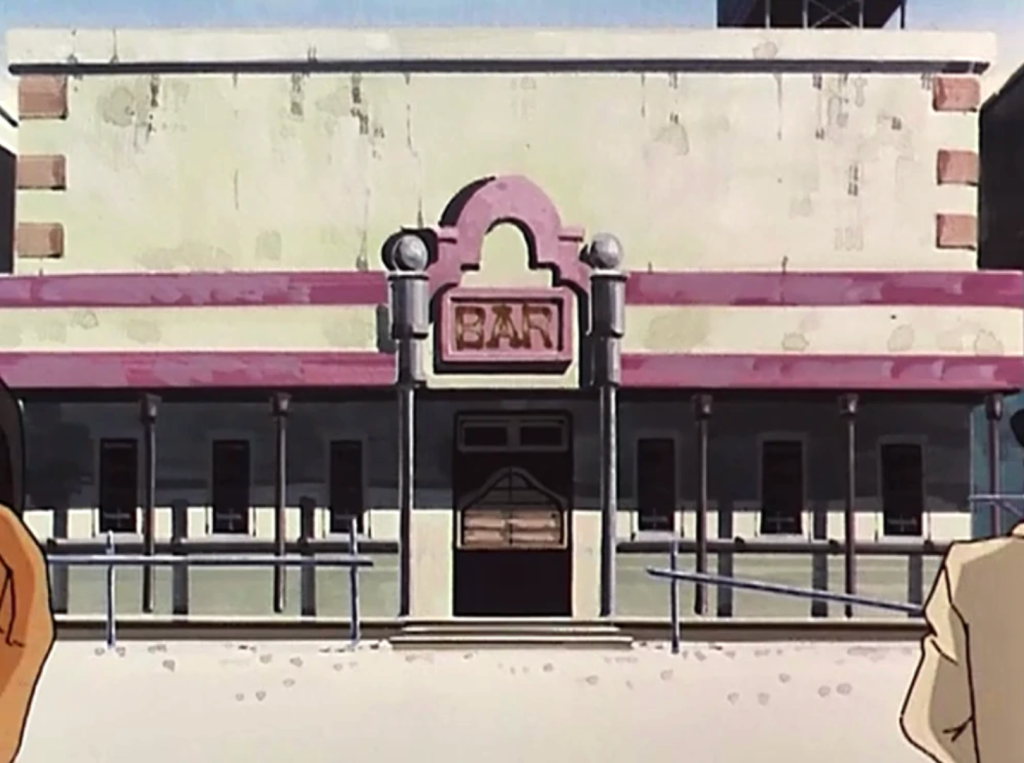
Ballad Repetition and Saloon-Style Swing
If you’ve ever watched an old Western, you’d find that, like Trigun, ballads and bars just go hand-in-hand with one another. Across each iteration of this story, Vash, Meryl, Wolfwood, and crew frequent a lot of bars. Like, a Cowboy Bebop number of bars. In fact, the 1998 series opens the first episode inside of one. This, too, would’ve been common for real outlaws both then and now, but I didn’t need to tell you that. Stamped on the cover of my Trigun Funimation DVD set is the iconic yellow subtitle “The Ballad of Vash the Stampede,” a lasting reminder that the series is just that, a ballad: a recount of this pseudo-mythical heroic figure and the dramatic past that immortalized him. (Or permanently labeled him as an outlaw in every town and territory on this side of July City, take your pick.)
The point is, the ballad is the story of an adventure, of a hero, his tragic gifts, and his triumphant deeds. And like any song, it garners strength through repetition. If any story is going to get remade again and again, it’s one in a similar disposition to Trigun where having an evolving audience opens itself up to new variations on the same theme. Even as a standalone ’90s anime, the series uses its episodic escapades to drive the notorious character of the “Humanoid Typhoon” into the viewer’s skull time and time again until the outlaw FINALLY meets his fated showdown against ruthless rival Millions Knives. If Trigun is remembered for anything, it’s without a doubt for being the ballad of one irritating pacifist with blond hair, round shades, and a crimson coat.
As an aside, music is as equally important as giant lightbulbs and steam trains for creating a setting reminiscent of vintage Westerns. Composer and guitarist Tsuneo Imahori brings jazz, folk, electronic, and orchestral genres into the 1998 and film OSTs that I can only call “electrified Western.” One moment the folk-style swing guitar is jamming’ out with the drums, the next moment it’s a storm of freestyle heavy metal. Or steady, sexy tango with bongos. Or smooth sax with jazz-style piano, saloon-style piano, ballad-style piano—look, if you can play it on a keyboard, Trigun has it. Stampede even dusts off its version of a “pipe organ.” Different composer (nothing but respect to my guy Tatsuya Katou), but still.
Whether ballad or blues, Western landscapes and their depiction entail a degree of imagination to create a complete vision of some kind. This is why I position the classic series over the remake; the classic carries charm in all that it does while the remake tries so hard to be “cool” that it feels like any sci-fi CG series with overly wrought apocalyptic tones and a lack of love for its crew. Still, there is motion in each landscape, and how that kinetic energy is directed will convey the magnitude—and the struggle—of the trying journey the frontier vehemently demands from us. And Trigun kicks that frontierism up a notch in every way. It’s not just the Wild West being re-envisioned—it is one wilder yet.
“I meditate diligently every morning. The subject is Life and Love. I quit after three seconds.”
– Vash the Stampede

Afterword: A 25-Year Retrospective Ramble
I’ll finish by addressing my lateness on two accounts.
The first is that this post comes over two months after my announcement that I’d be marathoning Trigun for my blog’s annual Valentine’s Day Special. I don’t really have any excuses aside from that I finished and didn’t really have too much to say on Trigun at the time . . . Now we’re here 2,000+ words later . . . However, this tardiness does not compare to the second offense: my being 25 years late to watching this much beloved sci-fi anime. Granted, it was released before I was born, but I’ve had Funimation’s Anime Classics DVD set collecting dust on my shelf for several years. I’m not sure why I waited so long to start Trigun, but in a way, I’m glad I watched it when I did. Any past iteration of myself would’ve found it annoyingly quirky. Now, after the release of its hotly anticipated remake series, I get to say it’s annoyingly quirky YET better than the original story it was based on. (Sorry, but when one has gung-ho gunslinger Milly Thompson and the other doesn’t, the decision is obvious!)
Trigun was a unique experience for me because it failed astonishingly at making me care about the epic sci-fi plot and the MC redemption arc it was working towards and said, “Hey, check out these lamp cities instead! We have trains, too!” Damn. Looking back, the whole marathon feels like a dream. Glad I dreamt it, but I’m happier to be awake.
Ok, I think I’m done with the ballad of Vash the Stampede and its lovely calamities for a bit. Someone take it away from me so we can queue up a different tune.
‘Til next time!
– Takuto

